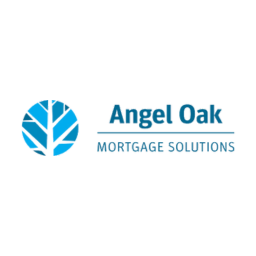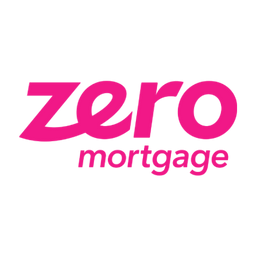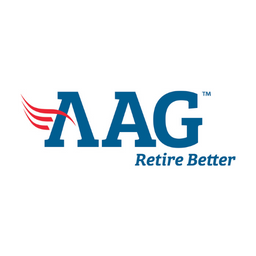Most homeowners have made monthly mortgage payments for decades, but those payments can come through in retirement. Retirees with paid-off homes won’t have to worry about monthly rent, but there’s another advantage home equity provides: reverse mortgages. This financial product helps homeowners afford the cost of living when they retire. It may be the key to staying in your neighborhood instead of having to downsize and relocate to a cheaper area.
It’s a good idea to have multiple income streams when you retire. Social security, cash flow from stable investments, and other income streams can help. However, a reverse mortgage can make it easier to stay where you are and have a less stressful retirement.
What is a Reverse Mortgage and How Does It Work?
Homeowners build equity in their homes as they make mortgage payments and property values increase. Reverse mortgages let you tap into your equity through monthly payouts. You can continue receiving payments as long as you have equity left in your home. Homeowners who use reverse mortgages don’t have to pay them back as long as they follow these rules:
- Continue paying property taxes, insurance, HOA,
- Keep the property in good condition (i.e., get the lawn mowed, make necessary repairs, etc.)
- Address any outstanding federal debt and continue paying taxes
- The home must be your primary residence
If a homeowner follows those rules, the loan won’t be due until they pass away, but there are additional rules for spouses. An eligible non-borrowing spouse has to be married to the borrower when that person gets the loan. In addition, the non-borrowing spouse must follow the same rules as the borrowing spouse.
What Factors Affect How Much You Get from a Reverse Mortgage
A reverse mortgage is a useful financial product for retirees who want to live in their current homes. But naturally, some reverse mortgages pay out more funds than others. These factors impact how much you can expect to receive as a lump sum or through monthly distributions, depending on your preference.
Current Equity in Your Home
A reverse mortgage draws from your home’s equity. For example, if you have $100,000 equity in your home, you cannot borrow more than $100,000 unless your home’s value rises over time. Equity is based on how much of the mortgage you paid off and how your home’s value changes over time.
Type of Reverse Mortgage
Homeowners seeking reverse mortgages can choose from two types of mortgages. The Home Equity Conversion Mortgage has limits that change each year. The FHA adjusts the ceiling each year and decided on $1,089,300 for all areas in 2023. If you want a reverse mortgage that exceeds this ceiling, you will have to take out a proprietary reverse mortgage.
Age
Not every homeowner can get a reverse mortgage. The homeowner must be at least 62 years old to qualify for a loan. Anyone who meets this age requirement and other parameters can get a reverse mortgage, but older homeowners can borrow larger amounts of money. This is because lenders have to wait for the owner to pass away before recouping the loan’s proceeds. If a borrower lives longer, the HUD will have more expenses over the loan’s lifetime.
Existing Mortgages
Reverse mortgage providers require that you pay off your existing mortgage before tapping into your reverse mortgage. If the lender lets you borrow $500,000 in home equity, and you have a $100,000 balance on your mortgage, you will have to pay it off first. That will leave you with $400,000 in equity for the reverse mortgage. A higher mortgage balance will limit how much you can borrow from a reverse mortgage program.
APR
Lenders set an interest rate for each reverse mortgage that impacts how quickly debt accumulates. A higher interest rate will make lenders more cautious about providing funds to borrowers. The limit may be more restrictive to accommodate the higher APR. If you can secure a lower interest rate for your reverse mortgage, you may have access to more of your home’s equity. You can secure a lower APR if you have a good credit score, but some factors are out of your control. If the Federal Reserve increases interest rates, financial institutions will get tighter with their funds.
Payment Type
Lenders incur more risk if they give you more money upfront. Setting lower limits helps them mitigate this risk, but what does it mean for borrowers? If you request a lump sum for your reverse mortgage, the lender will impose a more restrictive limit on how much you can borrow. You can receive more money from a reverse mortgage if you opt for monthly distributions. This isn’t as risky for the lender, and your property’s value can increase over time to mitigate some of the lost equity. You will get the most capital with a line of credit against your home.
Closing Fees and Other Costs
Like any other loan, reverse mortgages have closing fees and other costs. These expenses will eat into your home’s equity and limit how much capital you can use. Working with a financial institution to minimize these costs can help you save money, but you’ll still encounter them. Here are some of the closing fees and other expenses you can expect:
- Mortgage Insurance Premium/FHA Insurance: The mortgage insurance premium is equal to a percentage of the home’s value. A higher home value means a more expensive mortgage insurance premium.
- Origination Fees: This fee depends on your home’s value. The minimum amount is $2,500. If your home is worth more than $125,000, you will owe 2% of your property’s value up to the first $200,000 (i.e., 2% of $200,000 is $4,000). Then, you will owe an additional 1% on the remaining value. The origination fee cannot exceed $6,000.
- Title Fees: This fee costs roughly $75.
- Appraisal Fees: The average cost for this fee is $450.
- Counseling Fees: You have to meet with a counselor before getting a reverse mortgage. This service costs roughly $125, and you cannot use the loan to cover this payment.
How Much Money Do You Get from A Reverse Mortgage: Sample Calculation
Reverse mortgages can supplement your retirement income, but how much can you get from a reverse mortgage? You will use several inputs for a reverse mortgage calculator to determine your loan amount:
- Your age
- Your equity
- The interest rate
- How you want to get paid
- Closing costs
- Mortgage insurance rate
Suppose a 70-year-old homeowner has a property worth $500,000 and a 1.75% mortgage insurance rate. The interest rate is 5%, and the closing costs come to $10,000. In this reverse mortgage example, you can choose from the following options:
- $162,800 lump sum payment
- $166,800 line of credit + $111,200 after the first year ($278,000 total)
- $2,102/mo if you plan on living in the home for 20 years
Adjusting any of the inputs will impact how much you can borrow. For example, if you get a 4% rate on your reverse mortgage loan, you can borrow more money for a lump sum payment. Older borrowers can also access additional capital.
Running calculations helps homeowners gauge how much they can borrow. Knowing this number makes it easier to plan for retirement and spend your money wisely. While a reverse mortgage can be a great financial product for your needs, it’s important to plan accordingly so you do not outlive your reverse mortgage.











